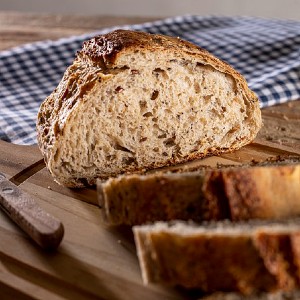Selection of mixed starters for the preparation of traditional Moroccan bread

Accepted: December 19, 2022
All claims expressed in this article are solely those of the authors and do not necessarily represent those of their affiliated organizations, or those of the publisher, the editors and the reviewers. Any product that may be evaluated in this article or claim that may be made by its manufacturer is not guaranteed or endorsed by the publisher.
Authors
The main objective of this work was the selection of mixed starters with a combination of Lactic Acid Bacteria (LAB) and yeast strains for traditional bread production in Morocco. For this, a total of 21 LAB strains and 36 yeast strains were isolated from different traditional sourdough. Dough fermentation were assessed by monitoring physicochemical parameters including, titratable acidity, decrease of pH and lactic acid, ethanol and CO2 production. A total of six yeasts and four LAB were selected for their technological performances. Morphological, physiological and biochemical identification performed using API identification kits confirmed that these strains belonged to Saccharomyes cerevisiae, Candida humilis and Saccharomyces exiguus species, and Lactobacillus plantarum and Lactobacillus casei species for yeasts and LAB respectively. The yeast S3-L2 and the LAB ODBL5 strains exhibited the best performances among the selected ones; S3-L2 yeast strain were able to produce ΔV=23mL of CO2 and showed the highest values of ethanol and biomass production (2.87 g/L and 1.25 10^9 UFC/mL, respectively). Whereas OD-BL5 LAB strains produced 13.9 g/L of lactate in dough. These findings lead to consider these two strains very good candidates for the formulation of an effective mixed starter for bread preparation. Subsequently, sensorial analysis results showed that bread prepared using mixed starter No. 24 composed of the two selected species exhibited better exterior appearance, golden and crispy crust, large volume and honeycomb crumb, compared to the control.
How to Cite

This work is licensed under a Creative Commons Attribution-NonCommercial 4.0 International License.
PAGEPress has chosen to apply the Creative Commons Attribution NonCommercial 4.0 International License (CC BY-NC 4.0) to all manuscripts to be published.

 https://doi.org/10.4081/jbr.2023.10697
https://doi.org/10.4081/jbr.2023.10697



